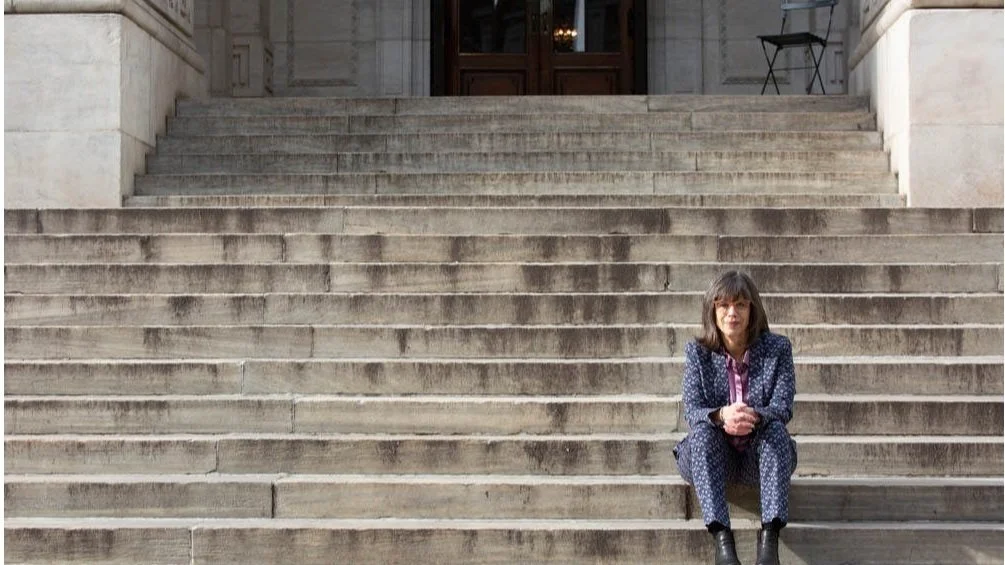Read "Create an Engaging Website" from the June/July 2015 issue of Professional Artist.
How are you “graduating” this month?
Develop your talent without hesitation
Six dos and don'ts I learned this week to foster calm
Give yourself the first hour of your day
I found my name at the Letterpress
3 ways to capture your best headshot
Let Your Hands Decide For You
3 Ways to Expect More From Your Art
Guest Blog: How actor and writer Brynn Baron deals with rejection
Who Are You Becoming?
Jack Straw Writers tell "Family Secrets" at Literary Arts on October 2
I'm now Editor at 'Professional Artist' magazine
Ask your questions, while you still can
Apply for a residency or make your own
Let Yourself Arrive
After you walk to the podium or step onto the stage to read or give a talk “let yourself arrive,” said Elizabeth Austen, at the performance workshop I attended last Sunday at Jack Straw Productions in Seattle. Don’t rush, especially at the beginning, she said, because “it takes the audience a few moments to tune its ears to your voice.”
Austen is a poet, trained actress, Washington State Poet Laureate, and an inspiring, insightful performance coach. She has a knack for bringing out the best in the poets, memoirists and novelists among us – twelve writers reading in different genres, with different presentation styles, and different needs for each piece of writing. She helped us identify our natural gifts as performers and our challenges with many tips for how to “best serve the work.”
If you live in Seattle and want to see how this year's Jack Straw Writers applied Austen's coaching to our work, please join us on May 2, 9, or 16 at 7 pm at Jack Straw Productions. (I'm reading May 9 and would love to see you there.)
I want to share three more tips with you from Austen’s workshop that may help you when you rehearse for a talk or a reading:
“You are not the work,” she said. The performer you is different than the writer you (or the artist you). The way I think about this is when I’m reading a work or giving a talk, it’s as if I’m playing me in a movie. But it’s not “me.”
You’re performing (or presenting) “in service of the work,” she said. Think about what style will best serve your audience and your work. For example, you may be a shy person but your work may be large and loud. Can you stretch yourself as a performer so you can be as big as your words need you to be?
“Don’t let the word ‘perform’ scare you,” she said. “To perform is to activate, to bring something to life.” That’s all and that’s everything.
The gold to be found in rejection
Another rejection letter landed in my mailbox recently and I didn’t toss it in the recycling bin as quickly as I used to. Instead, I read it carefully. Because I’ve learned that you never know what gold you may find. It used to be that to rid myself of the sting of “no” I would scan the letter and throw it away almost in one motion. I wanted to rid myself of that rejected feeling asap.
Then, once, as I was skimming, I read this sentence: “We encourage you to apply again next year.”
Hmmm. I thought. “I bet they say that to everyone.”
I decided to find out if they did in fact write that to everyone so I called the organization. After thanking them for reviewing my application, Isaid, “I’m just wondering but did everyone receive the same rejection letter? Because mine encouraged me to apply again next year.”
“We had two rejection letters we sent,” the woman said. “So you received the better one.”
This wasn’t the acceptance I wanted but this meant a lot: it was encouragement to keep going. It was an invitation to look at my work again. It was what all artists want: an audience.
Here’s a few sentences from that last rejection I received:
We received more than 1,500 applications and can offer 40 residencies. Though your application did not advance into the final round this year, we want you to know that your work resonated with our reviewers. Sending work into the world is an act of bravery, and we appreciate the opportunity to experience your voice.
I didn’t need to call them this time.
Of course I was sorry to lose but this letter provided some gold. First, it showed me just how stiff the competition was this year. Second, it complemented my work and acknowledged my bravery. That took the sting out, and even better, propelled me back to the writing desk.
Also, I made a mental note for the next time I need to write a rejection letter: What I write can either open up a relationship or shut it down. Because of this organization’s nice letter, even though they rejected me, I still feel warmly toward them. Perhaps I’ll take a workshop with them or, when I’m feeling generous, give them a donation. In other words, they haven’t lost me.


















